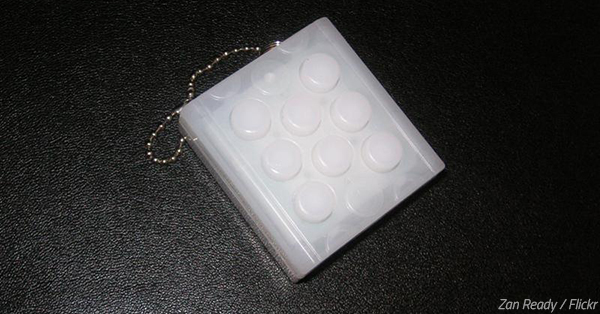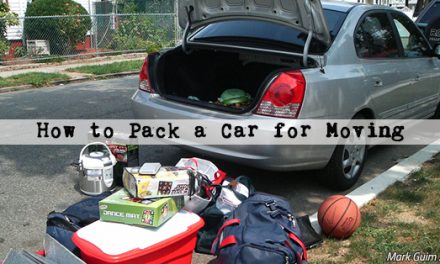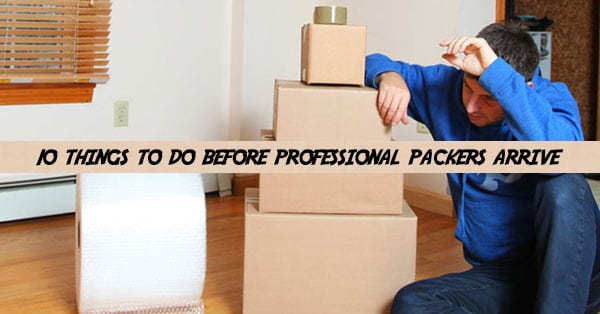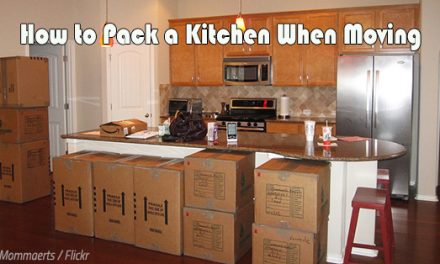 When you’re about to start packing fragile items for moving, your very first thought will probably be to use as much bubble wrap as possible to make sure your breakables survive the move in one piece. And that’s the right thing to do as bubble wrap does provide the best possible protection for any household items made of glass, porcelain, ceramic, wood, or another delicate material.
When you’re about to start packing fragile items for moving, your very first thought will probably be to use as much bubble wrap as possible to make sure your breakables survive the move in one piece. And that’s the right thing to do as bubble wrap does provide the best possible protection for any household items made of glass, porcelain, ceramic, wood, or another delicate material.
However, there’s also a serious drawback of using bubble wrap to protect your fragile items and that’s the relatively high price of the packing material. During your move, you won’t really like the idea of spending money on extras that you can do without and that’s especially true when you happen to be moving on a limited budget.
Your top priority in such cases should be to use smart cost-saving techniques that will allow you to be as thrifty as you possibly can. In other words, you shouldn’t spend money on things unless you really have to.
To minimize your packing costs, you can choose NOT to use bubble wrap to protect the most fragile items in your home. No more bubble wrap when packing for a move. Sounds too good to be true, right?
Right. And yet, it’s perfectly possible – all you need to do is read on to learn how to pack without bubble wrap.
Why you should use bubble wrap
Let’s first say that the idea of NOT using bubble wrap when packing fragile items may seem rather odd at first. After all, everybody knows the major advantages of using bubble wrap when packing for moving:
- Unsurpassed level of protection. The way bubble wrap is made – trapping air between two plastic sheets – ensures the outstanding cushioning property of the packing material. When wrapped around extra-breakable items, the soft air pockets form a thick protective layer that will absorb any harmful external forces such as shocks, vibrations, or even direct blunt hits. As a bonus, bubble wrap also protects fragile items from dust, dirt, and moisture during the actual relocation of the protected things from one home to another.
- Weightlessness. Bubble wrap is a very light packing material which is a big advantage because it won’t add to the weight of the total shipment. As you probably know, long-distance movers will calculate the moving price based on how much your items weigh in total (one of the price-forming factors).
- Versatility. Bubble wrap is also famous for its high level of versatility and flexibility. The air-filled plastic material will wrap tightly around fragile materials of any shape and size, thus forming thick protective bundles that will insulate your breakables from any destructive forces during transport. All you need is to use a bit of tape to secure the bubble wrap bundles, and you’re ready.
- Fun. Popping the air bubbles of the plastic material can be a lot of fun. What’s more, it also has a mild therapeutic effect of relieving the accumulated stress of moving house.
Why you should NOT use bubble wrap

Many people like the idea of using bubble wrap and would not be willing to substitute it for any alternative packing materials.
As you can see, using bubble wrap during the house packing process has many indisputable advantages, especially when you’re moving a large number of breakables. For example, packing most of your kitchen items will require a large number of bubble wrap sheets to make sure nothing gets broken during transit.
However, bubble wrap as a packing material has a couple of disadvantages that you should know about before you rush to purchase a few large rolls of plastic wrap.
Here’s why it may be a good idea to pack your fragile items without bubble wrap:
- Environmentally unfriendly. Bubble wrap is made of plastic sheets, so most of the time, it will be non-degradable. Basically, this means that you will need to be careful how you dispose of the remaining bubble wrap after you’re done unpacking your items in the new home. Of course, there’s also eco-friendly bubble wrap on the market (aka green bubble wrap, Enviro bubble wrap, etc.) but it is more expensive than the standard one.
- Price. The price of bubble wrap will vary depending on where you buy it from. Also, the cost is affected by the amount, size, and manufacturer. Be advised that if you wish to minimize the environmental impact when moving house, you should use biodegradable bubble wrap, which is more expensive in general.
Here are some price examples so that you can get a general idea of how much bubble wrap costs:
- A box of 150 ft. of Enviro-bubble costs around $20 at UHaul;
- A roll of 100 ft. of Enviro-bubble costs roughly $25 at UHaul;
- A roll of 250 ft. of Enviro-bubble costs roughly $30 at UHaul;
- A roll of 60 ft. of green bubble wrap (Duck brand) costs around $11 at Walmart;
- A roll of 200 ft. of clear bubble wrap (Duck brand) costs around $20 at Walmart;
- A roll of 400 ft. of clear bubble wrap (Duck brand) costs around $33 at Walmart.
If these prices seem somewhat affordable to you, remember that it’s the sheer amount of bubble wrap that you will need that will hurt your budget the most.
In your kitchen alone, you will need to use bubble wrap to protect an overwhelming number of breakables – plates, glasses, bowls, cups, porcelain mugs, forks, spoons, knives, and more. When packing the rest of the rooms in your house, you will need bubble wrap to protect art pieces, vases, mirrors, delicate furniture, and most types of electronic devices (use anti-static bubble wrap for your electronics).
As a rule of thumb, any item that you view as fragile should be protected with the air-filled plastic material for added safety. And that’ll most likely mean numerous rolls or boxes of bubble wrap as well.
Packing Checklist: Packing Timeline For Moving
Is looking for free bubble wrap worth it?
Before we give you the full list of good substitutes for bubble wrap so that you don’t have to spend money on the plastic packing material, let’s discuss whether acquiring free bubble wrap for your packing needs is worth the time and effort.
Now, the only way to use bubble wrap when packing fragile items and not spend any money on acquiring the said packing material is to get it for free. Yes, similar to finding free moving boxes, it’s perfectly feasible to find free bubble wrap as well.
In fact, getting bubble wrap for free will be a win-win situation for you – you’ll be able to protect your delicate items in the best possible way AND save money in the process. The only problem is that you’ll have to sacrifice plenty of time you may not really have at your disposal and effort you may not be willing to invest.
In practice, there are several good ways to secure free bubble wrap before you start packing up your fragile possessions:
-

You never know which one of your friends will be keeping a HUGE roll of bubble wrap in their garage. Just for you.
ASK friends, neighbors, and work colleagues if they happen to have any amount of usable bubble wrap that they have in their homes and won’t need in the near future. To reach out to all of your friends at once, consider publishing a Facebook post (Need bubble wrap. Can anyone help?) and asking your pals to share the call for help with their Facebook friends. In the best-case scenario, you’ll end up with more bubble wrap than you’ll ever need, free of charge at that.
- CONTACT the largest retail stores in your city and see if they should have any quantities of bubble wrap sheets that they don’t need anymore. Most of those stores get frequent shipments (sometimes daily) of various products protected in bubble wrap. So, once they have unwrapped those goods and displayed them in the stores, the remaining amount of bubble wrap can be yours for the asking.
- SEARCH for free bubble wrap online at websites that have free stuff sections. Freecycle and Craigslist are the two places online that you have the best chance of scoring bubble wrap for free for your specific packing needs.
Where to Find Free Packing Materials
How to pack without bubble wrap: alternative packing materials
Bear in mind that finding free bubble wrap won’t be an easy task. What’s more, the time you’ll spend searching for that packing material may be a luxury you cannot really afford, especially when you have too little time to prepare to move out.
So, when brand-new bubble wrap is too expensive for you and free bubble wrap is too much of a hassle to get, then you’re only left with one good option: to pack your fragile items without bubble wrap. But since you still have to protect your breakables, then you’re going to have to use good alternative packing materials to bubble wrap that will enable you to keep your possessions damage-free throughout the move.
Packing paper
Wrapping paper is believed to be the best substitute for bubble wrap.
White packing paper is soft enough to create a cushioning layer that will protect fragile items during a move. Wrapping paper conforms easily to any shape and keeps dust and moisture from reaching the items you’re trying to protect.
The good news is that wrapping paper is (much) cheaper than bubble wrap – 200 sheets of clean, white newsprint cost around $10 at UHaul.
The bad news is that you’re going to have to use at least 3-4 (sometimes more!) sheets of paper to protect a single fragile item since one sheet of paper is much thinner than one sheet of bubble wrap.
Blankets

Blankets can be excellent substitutes for bubble wrap.
Thick furniture blankets offer an outstanding degree of protection for fragile items thanks to their soft padding effect. However, moving blankets are more expensive than bubble wrap to purchase and use during the packing process, so you should consider using blankets only when trying to safeguard very delicate items that also have sentimental value for you.
If you have regular household blankets lying around in your home, then you should definitely use them to wrap and cushion breakable items. You’re moving your blankets anyway, so why not use them for padding instead of large sheets of bubble wrap?
Towels
Similar to blankets, towels are great padding materials and can be used as an excellent substitute for bubble wrap.
You don’t need to use brand-new, still unpacked towels that you’ve kept for years since there’s always a chance to ruin a towel or two during the house moving process. However, feel free to wrap extra-fragile items in used yet clean towels that you have in your home.
Bear in mind that, as a rule, towels are heavier than bubble wrap and will increase the overall weight of each box when used to protect breakables. However, since you’re taking those towels with you anyway, you’d better use them as bubble wrap alternatives to reduce moving costs.
Pieces of clothing + bed sheets
You don’t need to spend a lot of money on bubble wrap when you’ve got all sorts of old clothes and old bed sheets lying around the house.
The thing is that most pieces of clothing and bed sheets that you’re thinking of discarding completely during the sorting process can be used effectively as substitutes for bubble wrap. There’s really no point in throwing away potential packing materials, at least not until after the move is over.
Use only clothes and bed sheets that you won’t mind seeing ruined as it can easily happen during a move. Such old fabric pieces can be used not only to wrap fragile items but also to fill in gaps inside cardboard boxes.
Socks
Socks can be used to protect kitchen glasses, especially glasses with super-fragile stems. Normally, you would bubble wrap such stemware pieces but since you’re willing to save money on packing materials, then you can simply insert those glass items inside thick and clean socks and transfer them into pre-padded boxes.
Newspapers
Old newspapers will come at no extra cost for you but you should be careful how you use them during the packing process due to the risk of ink stains. And this is exactly why you should only use newspapers as space fillers inside moving boxes and never as protective layers that will come into contact with your fragile and delicate items.










Hi. I am new in the moving industry. Finding free stuff is really helpful. I’ve never heard of freecycle before. I am definitely checking that out. Starting out can be daunting. Just researching more stuff right now. Thanks